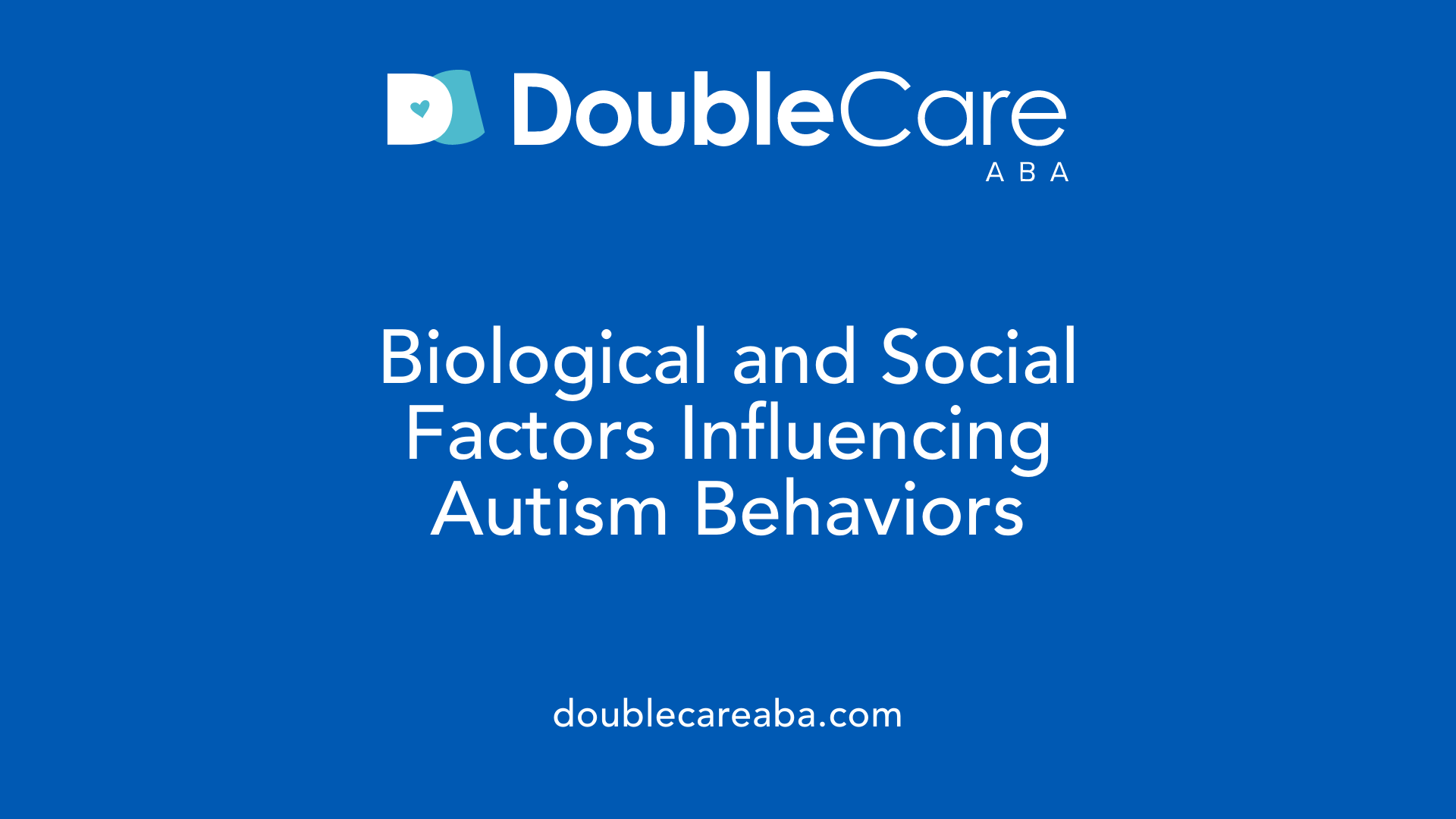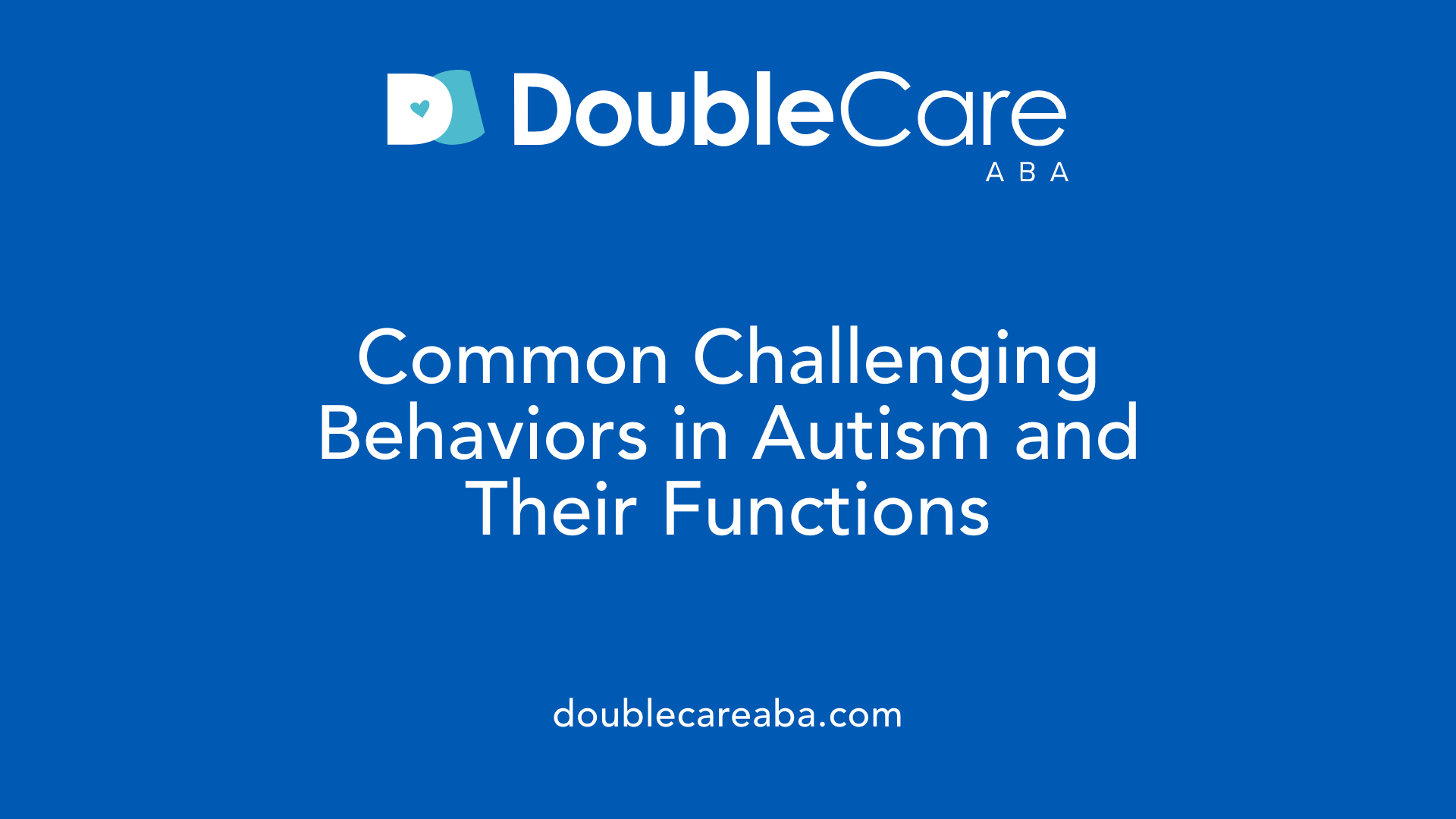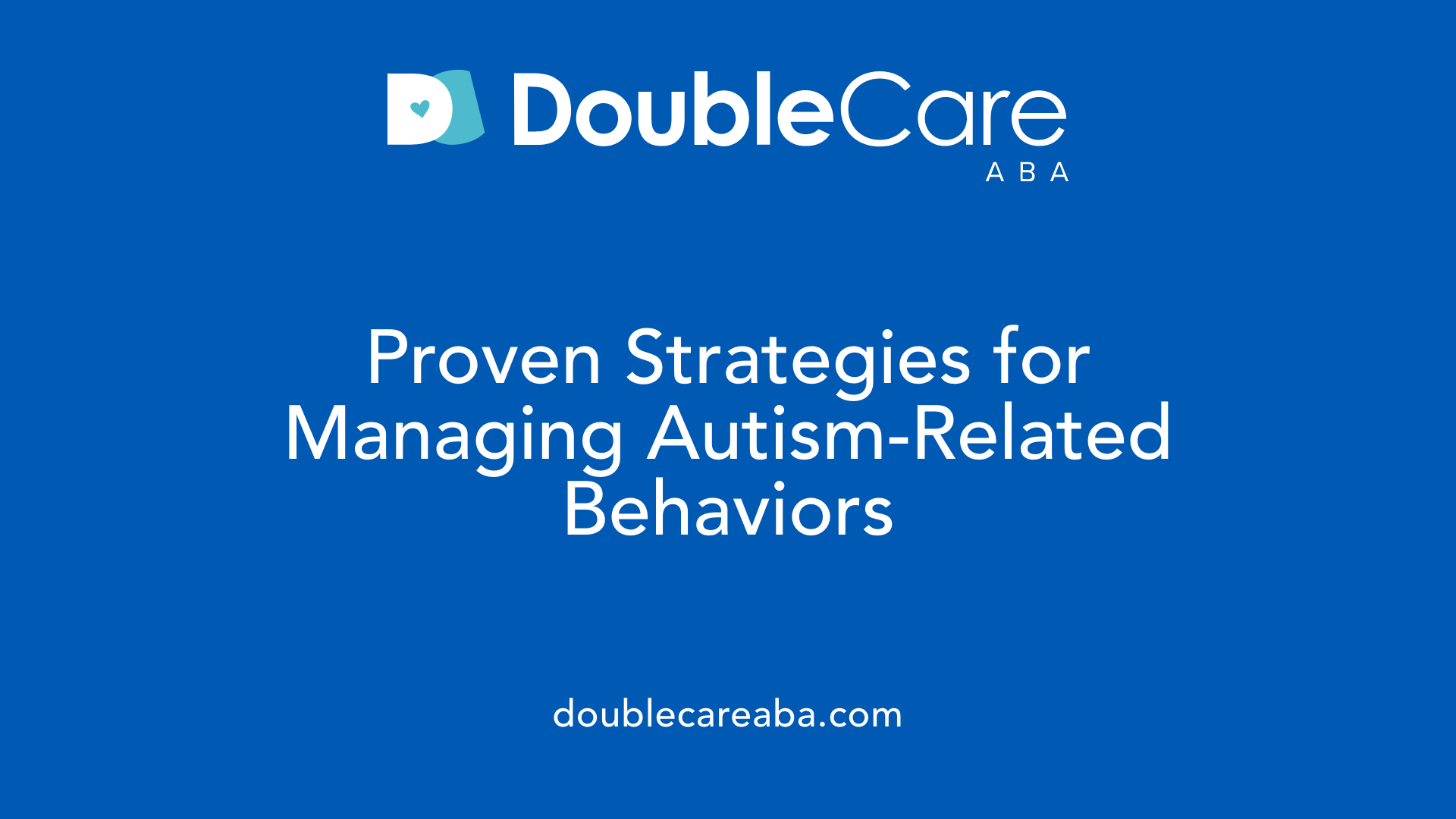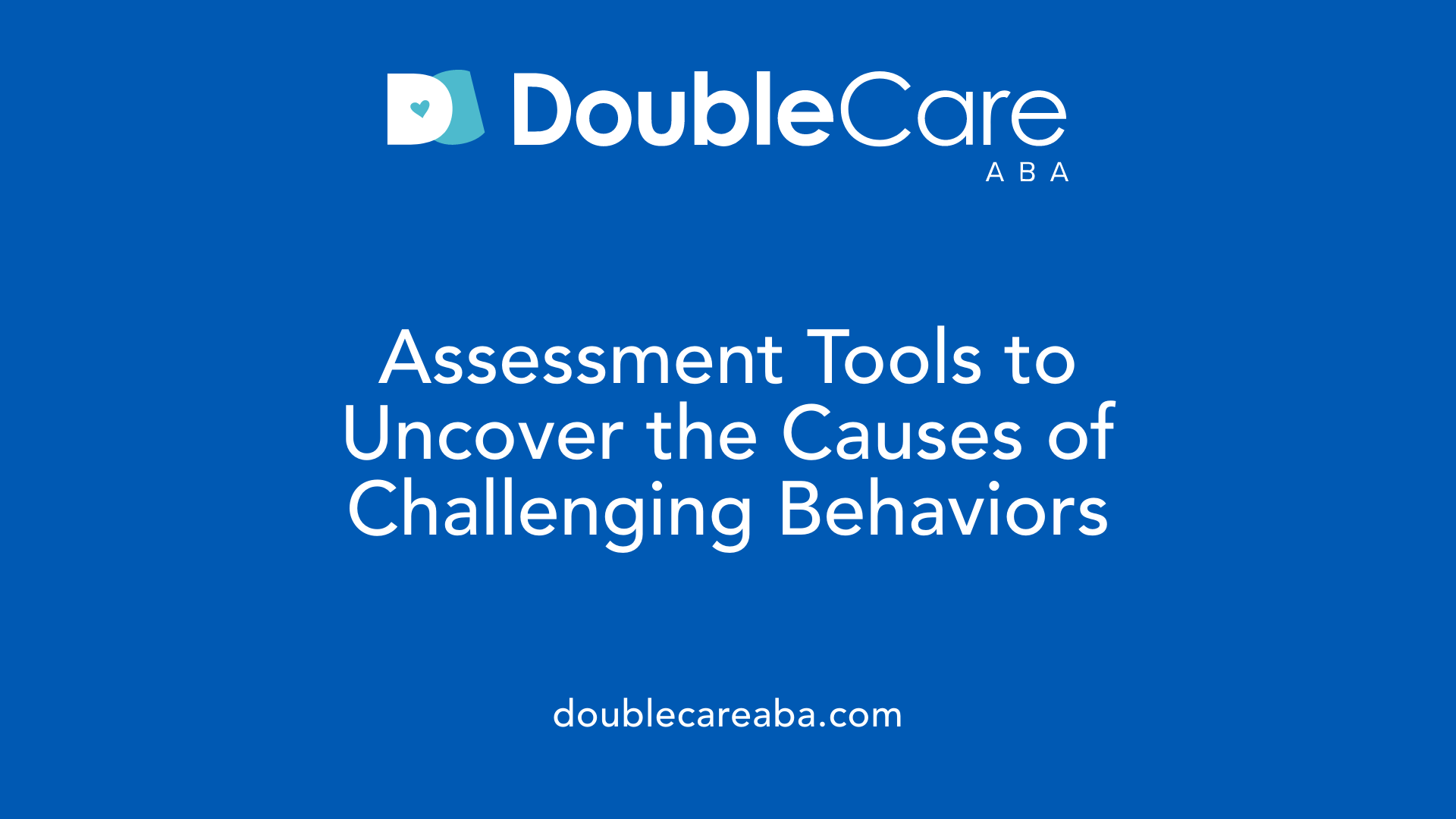A Comprehensive Guide for Caregivers and Supporters
Challenging behaviors are a common and complex aspect of autism spectrum disorder (ASD), often posing significant challenges for individuals, families, and educators. These behaviors—ranging from aggression and self-injury to tantrums and sensory overload—are often misunderstood. This article provides an in-depth exploration of the causes, characteristics, assessment tools, and effective intervention strategies to support autistic individuals in managing these behaviors. By understanding the underlying factors and applying tailored support techniques, caregivers can foster a safer, more supportive environment that promotes growth and well-being.
Causes of Challenging Behaviors in Autism

What causes challenging behaviors in autistic children?
Challenging behaviors in individuals with autism are often driven by a complex mix of biological and social factors. Understanding these causes helps caregivers and professionals create more effective support strategies.
Biological influences are significant and include sensory processing difficulties. Many autistic individuals experience heightened or reduced sensitivity to sensory stimuli such as lights, sounds, textures, or smells. These sensory issues can cause discomfort or overwhelm, triggering behaviors like self-injury, tantrums, or aggression as coping mechanisms.
Medical comorbidities also play a role. Conditions such as allergies, gastrointestinal problems, anxiety, migraines, and sleep disturbances can increase discomfort and stress, which may manifest through challenging behaviors. For example, pain or physical discomfort might be triggers that set off disruptive actions.
On the social side, communication difficulties are a fundamental factor. When children with autism struggle to express their needs or feelings verbally, they might resort to behaviors like hitting, biting, or vocal outbursts to signal distress or seek attention. These behaviors often serve functional purposes, such as avoiding undesired tasks or gaining access to preferred activities.
Environmental changes, like disruptions in routines, unfamiliar settings, or sensory overload from crowded or noisy places, can also provoke adverse reactions. Fears, anxieties, or the need for control in unpredictable situations frequently cause behaviors aimed at escape or self-soothing.
To effectively address these behaviors, assessments such as Functional Behavioral Analysis (FBA) are used to identify their specific functions. Recognizing whether behaviors are attempts to communicate, escape discomfort, or seek sensory input allows for tailored interventions that reduce triggers and promote positive coping strategies.
Common Challenging Behaviors in Autism

What are some common challenging behaviors exhibited by individuals with autism?
Individuals with autism often display a range of behaviors that can be challenging for families, educators, and caregivers. These include aggression, self-injury, property destruction, tantrums, and disruptiveness. For example, a child might hit or bite others, bang their head against surfaces, or break objects during episodes of distress.
These behaviors are not random; they often serve important functions for the individual. They can be ways of communicating if the person has difficulties expressing their needs or feelings. For example, a tantrum might be a way to escape a task they find overwhelming, or self-injury can be a method to cope with sensory overload or anxiety.
Biological factors like medical comorbidities—such as allergies, migraine, gastrointestinal issues, or sleep disturbances—can influence the severity and frequency of these behaviors. Environmental and social factors also play a significant role. Changes in routine, sensory overload, or communication barriers often trigger or worsen challenging behaviors.
Understanding the functions of these behaviors is essential. Tools like Functional Behavior Analysis (FBA) help determine whether behaviors aim to gain attention, escape from demands, seek sensory input, or fulfill other needs. Based on this understanding, interventions can be tailored to address the root causes, employing prevention strategies, teaching alternative skills, and responding effectively when behaviors occur.
Efforts to manage challenging behaviors focus on creating supportive environments that reduce triggers and encourage positive, functional behaviors. Consistent responses, visual supports, sensory breaks, and social stories are among the techniques used to help individuals with autism communicate more effectively and reduce problematic behaviors.
Effective Strategies for Behavior Management
 Managing challenging behaviors in children with autism requires a combination of tailored strategies that address both the behavior itself and its underlying causes.
Managing challenging behaviors in children with autism requires a combination of tailored strategies that address both the behavior itself and its underlying causes.
One foundational approach is Applied Behavior Analysis (ABA), which involves analyzing behavior patterns through functional assessments and applying reinforcement techniques to encourage positive behaviors while reducing problematic ones.
Visual supports are also highly effective. These include visual schedules, social stories, and communication boards that help children understand routines and expectations clearly. Having a consistent routine supported by visual aids reduces anxiety and helps prevent tantrums or meltdowns triggered by unexpected changes.
Establishing clear expectations and routines is crucial. Using visual cues and simple, consistent instructions helps children know what to anticipate and how to behave in different settings.
Positive reinforcement plays a vital role in behavior management. Rewards such as praise, tokens, or preferred activities motivate children to adopt desirable behaviors. Teaching functional communication skills, like using picture exchange communication systems (PECS), helps children express their needs effectively, reducing frustration and aggression.
Sensory integration techniques are also essential. Many behaviors stem from sensory sensitivities or overload. Providing sensory breaks, noise-canceling headphones, or calming activities can help regulate sensory input.
Environmental management involves minimizing triggers like excessive noise, bright lights, or chaotic settings when possible. Adjusting the environment to be more predictable and calming can greatly reduce challenging behaviors.
Involving parents and caregivers in training initiatives enhances consistency across settings. Creating individualized, proactive behavior plans that incorporate these strategies ensures a supportive environment that fosters development.
Overall, effective management of challenging behaviors in autism blends behavioral, developmental, and environmental modifications, with a focus on understanding the individual child's needs and strengths.
Assessment Tools and Models for Autism Behaviors
 Evaluating challenging behaviors in individuals with autism involves using various assessment tools that help identify underlying causes and guide effective interventions.
Evaluating challenging behaviors in individuals with autism involves using various assessment tools that help identify underlying causes and guide effective interventions.
Standardized diagnostic tools are crucial in establishing an accurate diagnosis. Among these, the Autism Diagnostic Observation Schedule (ADOS) and the Autism Diagnostic Interview-Revised (ADI-R) are considered the gold standards. ADOS involves direct observation of behaviors, while ADI-R is a comprehensive interview with caregivers, focusing on developmental history and current behaviors.
Screening instruments are widely used to detect early signs of autism, especially in young children. These include the Modified Checklist for Autism in Toddlers, Revised (M-CHAT-R), which is a parent-completed questionnaire. The Ages and Stages Questionnaire (ASQ) screens developmental delays, and the Social Challenges Screening Questionnaire (SCSQ) specifically evaluates social difficulties common in autism.
In addition to diagnostic and screening tools, several assessments provide deeper insights into a person's sensory processing, adaptive skills, and emotional regulation. The Vineland™ 3 measures adaptive behaviors necessary for daily living. The Sensory Profile™ 2 assesses sensory processing patterns and sensitivities. The Behavior Assessment System for Children™ (BASC™-3) evaluates emotional and behavioral functioning, while the Pediatric Evaluation of Disability Inventory-Computer Adaptive Test (PEDI-CAT) measures functional capabilities.
A comprehensive evaluation often includes multiple tools combined with clinical observations to ensure accurate diagnosis and effective treatment planning. Since no single test can alone confirm autism, ongoing assessments like the Autism Treatment Evaluation Checklist (ATEC) are valuable for monitoring treatment progress.
| Assessment Tool | Purpose | Description | Typical Use |
|---|---|---|---|
| ADOS | Diagnostic | Observes social and communication behaviors | Gold standard for diagnosis |
| ADI-R | Diagnostic | Interviews caregivers about developmental history | Gold standard for diagnosis |
| M-CHAT-R | Screening | Parent checklist for early signs | Early detection |
| ASQ | Screening | Developmental delay screening | General developmental screening |
| SCSQ | Screening | Social difficulties | Social challenges detection |
| Vineland™ 3 | Comprehensive | Adaptive behaviors | Intervention planning |
| Sensory Profile™ 2 | Sensory | Sensory processing | Sensory-focused interventions |
| BASC™-3 | Emotional/Behavioral | Emotional and behavioral screening | Behavior management |
| PEDI-CAT | Functionality | Functional capabilities | Daily living skills monitoring |
Understanding and utilizing these tools can improve diagnosis accuracy and tailor interventions to meet the unique needs of each person with autism.
Supporting Children and Caregivers
Caring for children with autism and supporting their families involves a comprehensive approach that emphasizes practical strategies, professional collaboration, and caregiver well-being.
Effective caregiver practices include establishing predictable routines and incorporating visual supports like social stories and communication boards. These tools help children understand what to expect and reduce anxiety associated with changes or unfamiliar activities. Clear, positive communication is vital, as it can lessen frustration and aid in teaching new skills.
Working closely with professionals such as behavioral therapists, educators, and healthcare providers ensures that families have access to tailored plans to manage challenging behaviors. These experts can perform assessments like Functional Behavioral Analysis (FBA) to identify underlying causes and develop targeted interventions.
Resources from organizations dedicated to autism support, such as the Caregiver Action Network, offer valuable guidance, including tips for handling aggression, managing meltdowns, and planning situations that might trigger difficult behaviors. Utilizing these resources can empower caregivers with up-to-date strategies and emotional resilience.
Caring for the caregiver's mental and physical health is equally crucial. Engaging in self-care practices, seeking peer support through community or online groups, and accessing mental health services if needed help sustain caregivers’ capacity to provide consistent support. A balanced approach ensures that caregivers can effectively support their children's development while maintaining their own well-being.
| Strategy | Description | Benefits |
|---|---|---|
| Routine and Visual Supports | Implement daily routines and visual cues to enhance predictability | Reduces anxiety, improves understanding |
| Positive Communication | Use clear, concise, and positive messaging | Decreases frustration and misunderstandings |
| Professional Guidance | Collaborate with specialists for tailored behavior plans | Addresses specific needs, improves behavior management |
| Resources and Education | Utilize guides, toolkits, and support networks | Enhances caregiver confidence and skill development |
| Self-Care and Support | Prioritize personal well-being, seek peer and professional support | Sustains caregiver resilience and emotional health |
Supporting children with autism requires a well-rounded approach rooted in consistency, collaboration, and self-care. By combining practical skills with professional support and personal well-being, caregivers can create a nurturing environment that promotes growth, reduces behaviors that challenge, and improves quality of life for both children and their families.
Current Research and Innovations in Autism Behavior Management
Understanding and managing challenging behaviors in autism is an evolving field that incorporates multiple disciplines and innovative technologies. Recent research emphasizes the use of comprehensive assessments like Functional Behavior Analysis (FBA) to pinpoint the purpose of behaviors such as aggression, self-injury, and meltdowns. These assessments help identify triggers and environmental or internal factors influencing behavior.
Furthermore, personalized intervention strategies are gaining prominence. These approaches consider biological factors—such as sensory sensitivities and co-occurring medical conditions—alongside social and environmental factors. Tailoring interventions to the individual’s unique profile improves their effectiveness. For example, integrating sensory integration techniques, medical management, and behavioral therapy creates a more holistic approach.
Emerging advancements include the use of technology-assisted therapies. Tools like wearable sensors and virtual reality environments are being tested to better understand internal sensations like pain or discomfort, which often underlie challenging behaviors. Researchers are also exploring biological markers and neural indicators, such as genetic profiles and brain imaging, to help identify subtypes of autism. These biomarkers aim to guide more precise treatment plans.
Large-scale data analysis is helping scientists better understand autism subclasses and the respective intervention needs. This stratification allows clinicians to customize strategies, improving outcomes and reducing trial-and-error approaches.
Overall, integrating multidisciplinary assessments, biological insights, and cutting-edge technology is advancing the management of challenging behaviors. These innovations promise a future where interventions are more effective, personalized, and aimed at improving the quality of life for individuals with autism and their families.
Supporting Behavioral Change and Long-Term Outcomes
What techniques can support autistic children through behavior management?
Supporting autistic children in managing behaviors involves multiple approaches tailored to their unique needs. Visual supports such as schedules, social stories, and timers help children understand daily routines and what to expect, reducing anxiety and confusion.
Positive reinforcement plays a crucial role in encouraging desirable behaviors. When children receive praise or rewards for positive actions, they are more likely to repeat those behaviors.
Consistent and calm communication is essential. Using clear, brief instructions and a soothing tone can prevent escalation during challenging moments.
Creating sensory-friendly environments is another effective strategy. Providing dedicated calm-down spaces and sensory tools like noise-canceling headphones, soft lighting, or textured toys help children self-regulate.
Offering choices within routines, setting clear expectations, and scheduling regular sensory breaks give children a sense of control and help manage overload.
Involving caregivers through training ensures that behavioral strategies are implemented consistently across settings. Evidence-based interventions like Applied Behavioral Analysis (ABA), Naturalistic Developmental Behavioral Interventions (NDBI), and structured routines are proven to support behavioral progress.
Overall, a combination of visual tools, positive reinforcement, environmental adjustments, and caregiver involvement creates a supportive framework that promotes positive behavior change and enhances long-term development.
Empowering Through Knowledge and Support
Understanding challenging behaviors in autism is the first step toward effective management and support. Recognizing underlying causes—whether biological, social, or environmental—allows caregivers, educators, and clinicians to implement tailored interventions that promote positive behaviors and reduce distress. Utilizing assessment tools like FBA and incorporating evidence-based strategies such as ABA, visual supports, and sensory regulation opens pathways to meaningful progress. Collaboration among families, professionals, and organizations enhances the support network, ensuring that autistic individuals can achieve their full potential within a nurturing environment. Continued research advances and resource availability empower caregivers worldwide to foster resilience and well-being in those with autism.
References
- Challenging Behaviors and Autism
- Understanding Challenging Behaviors in Autism Spectrum ...
- Behavior challenges
- Challenging Behaviors
- Distressed behaviour - a guide for all audiences
- Challenging behaviour: autistic children and teenagers
- How to help with your autistic child's behaviour
- Behavior Changes with Autism














